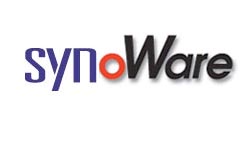 It must be something in the water in silicon valley right now. But no sooner have I written about VaST and Virtutech being acquired then Synopsys acquires CoWare as well. Since I never worked there, I don’t have any sort of inside track on what is going on. CoWare started life many years ago with a product called n2c, which stood for napkin to C, an attempt at turning high level system ideas into models quickly. They then did a deal with Cadence whereby they took over the old Comdisco SPW product line and the engineering team that supported it, in return for equity and royalties I think. Then more recently they decided to develop their own virtual platform technology which, I believe, is the heart of their business today. For a long time a lot of their revenue was service revenue in Japan (remember, they are the most advanced in system-level thinking so tended to be the first place where there was any revenue to be had) although I presume that is no longer the case.
It must be something in the water in silicon valley right now. But no sooner have I written about VaST and Virtutech being acquired then Synopsys acquires CoWare as well. Since I never worked there, I don’t have any sort of inside track on what is going on. CoWare started life many years ago with a product called n2c, which stood for napkin to C, an attempt at turning high level system ideas into models quickly. They then did a deal with Cadence whereby they took over the old Comdisco SPW product line and the engineering team that supported it, in return for equity and royalties I think. Then more recently they decided to develop their own virtual platform technology which, I believe, is the heart of their business today. For a long time a lot of their revenue was service revenue in Japan (remember, they are the most advanced in system-level thinking so tended to be the first place where there was any revenue to be had) although I presume that is no longer the case.
To sum up, there have been a number of different instruction set simulation technologies developed: Axys (which ARM acquired and then spat out again to Carbon when they decided they didn’t want to do all that modeling any more), Virtio (which Synopsys acquired a couple of years ago), VaST (which Syopsys acquired 2 weeks ago), Virtutech (which Intel/WindRiver acquired 1 week ago) and CoWare (which Synopsys acquired today). Phew.
Simon Davidmann and Brian Bailey both pointed out, correctly, that I’d forgotten about Imperas when I talked earlier about which technologies were left out there. There is also, of course, Qemu which is an open-source instruction set simulator. The base technology of Imperas is also open-source, the open virtual platform, www.OVPworld.org although that is not how they started out. So in an act of contrition for forgetting Imperas, let me tell you where they are: they have 2000 registered users, adding about 150 per month, spread around about 400 companies. They have over 40 processor models ranging from the bizarre ones used in automotive up to quadcore MIPS processors running at 200-1200 MIPS. They are still self-funded but are growing and adding staff.
So going forward there is Imperas/OVP still independent. Synopsys with Virtio, VaST and CoWare technologies which they will presumably try and pull together into a single environment, and WindRiver/Virtutech. One distributing basically over the web and the other two with much bigger distribution channels than they had before although less focused than before. Let the games begin.
